Background
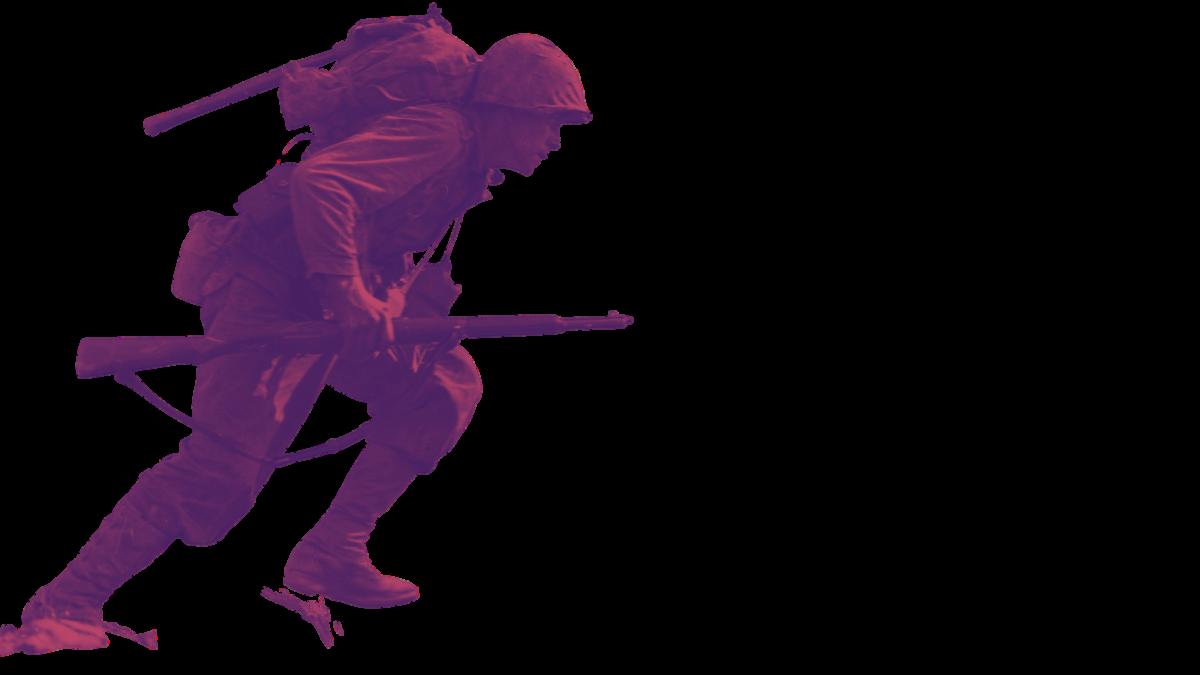
“The pen is mightier th Edward Bulwer-Lytton, quote that can be read a is actually applicable to the world In fact, it h used for such a long ti ways. Though, this quot step (or page, in this sen pen is mightier than the while the bullet/gun ma to beat, a few strokes o make wars cease to crumble into dust, and upside down. Such wa then for the Phil independence was but and wars, although d seemed like the only opt

World War2 Background
The outcomes of World War II were the many lives lost, the erasure of certain cultures, and the economic destruction of the majority (Kesternich et al , 2014) The impacts of the conflict, however, go beyond that since people all across the world still have to cope with the fallout from earlier events. Through the parties involved, the following six years amounted to bloodshed, economic decline, and strife The Treaty of Versailles, which ended World War I, and the strong development of Nazism, which was sparked by Hitler's invasion of Poland in September 1930, were the two factors that led Great Britain and France to declare war on Germany, sparking the start of World War II (Château de Versailles, 2021) One distinguishing aspect of the conflict is the fact that it originated in Europe, despite the fact that nations in Asia, including the Philippines, found themselves drawn into it Due to prior colonial rule and a lack of economic support, the Philippines was struggling to grow further and was thus very susceptible to the country's subsequent colonization and attacks (Ybiernas, 2007) The Imperial Japanese Navy's strike on Pearl Harbor on December 7, 1941, which precipitated the start of the Japanese occupation in the Philippines as Japan desired to believe the Philippines was an American colony, was the first time the Philippines became involved in World War II (Imperial War Museums, n d ) When the Philippines entered the war, it had a substantial adverse effect because 1 million Filipinos lost their lives, infrastructure was eviscerated, and the GDP of the economy fell to 30% by the end of the events of the war (Chris Capozzola, 2020) The effects of World War II are still widely felt in the areas of culture, politics, and economics in the Philippines and the societies that live in the country

1943 Philippine Constitution

The establishment of the 1943 Philippine Constitution went through no easy means It wasn’t even the projected Constitution the country’s leaders were aiming for; rather, it was supposed to be the 1935 Constitution Just as the nation was finally starting to get a taste of what independence tasted like with its newly established Constitution, all dreams came crashing down with the infamous quote mentioned later in the paper, “Bataan has fallen” But, with the exchanges of letters between a few key figures, the Philippines, later on, regained the promised freedom and independence, finally liberating the nation from colonial shackles.

Before the period of Japanese occupation, the Filipino people ratified the 1935 Constitution This version of the constitution was set to stay until July 4, 1946, when Philippine independence was promised The Implementation of the 1935 Constitution was seeing light as the National Assembly of the Philippines amended it in 1940 The legislative assembly of the Philippines was shifted from a unicameral one to a bicameral congress The term limit of the President was then changed to four years with a possibility of being reelected for a second term However, when the Japanese army arrived and occupied the country, the Philippine Constitution was once again changed into one that benefitted the Japanese more, resulting in the 1943 Constitution. In it, the Second Republic with Jose P. Laurel as the President had a strong Executive Power for those in position, and a Unicameral National Legislative Assembly, but the one in the National Assembly MUST be Anti-USA. This then continued on for only a few years as the USA came back to liberate the Philippines from Japanese rule. The Philippines then proceeded in using the 1935 Constitution until the Marcos regime.
The 1943 Constitution did its best to safeguard the lives of the Filipinos from the Japanese and any sort of human rights infringements throughout the Japanese Occupation. The Republic of the Philippines back then could be described as a Constitutional Dictatorship. This was because the constitution was drafted during a state of emergency, in which the Republic of the Philippines was under the hands and control of the Japanese. Because of that, much power was given to the President and the Executive Powers. The Philippines, however, fell to much of the Japanese’s influence – an enforced strict curfew, Japanese currency, an institutionalized military government, and a reduction by half of the neighborhood government systems

1943 Philippine Constitution
It’s interesting to see how quickly a country’s very own sets of laws and constitutions could change depending on who sits on top and would quite literally dictate the future of the country. With that said, it’s also important to note that such changes and laws could be used against specific persons or groups of people, like how the Japanese used the Constitution to not only gain control of the country but also to make the country be against the USA. Because of that, Filipinos resisted with all their might and set up lots of guerilla activity. These eventually just grew later on, which was crucial to the liberation of the country.

Nevertheless, countless lives were lost and human rights were violated. Countless cases of war crimes –pillages, rape, theft, murder, and other sorts of heinous crimes were committed amidst the Japanese occupation Women were made into “Comfort Women”, within military bases scattered across Japanese reach What marked the beginning of despair for the countless Filipinos was the infamous Bataan Death March, which then sparked the beginning of MacArthur’s famous quote “I Shall Return!”

Fall of Bataan

During World War II, Japan invaded the Philippines in 1941 up until 1945 (Yu-Jose, 1994) It all started 17 hours after attacking Pearl Harbor, the Japanese have begun bombing the “Clark Field” which is an air base in a part of Luzon, then Parts in Zamboanga, Fort Mckinley in Manila, and many warehouses and barracks which were completely destroyed (GOVPH, n.d.). As the invasion began, a lot of innocent Filipino people were killed, mistreated, and abused The president during the time of the invasion was President Manuel Quezon who was experiencing an illness. During his term, Manila city was considered an “Open City” which the Japanese started to occupy on December 24, 1941, and the Philippine flag was eventually reversed on December 18, 1941, in declaring that the country is in a state of war (official gazette, n d ) Some people joined the army without any experience to fight the Japanese invaders and among the Filipinos during that time, General Douglas MacArthur, was a US military adviser to the Philippines It was a difficult phase for the country to fight back against the oppressors during that time and he was forced to go back and abandon the Philippines within the orders of the US leader, President Roosevelt He left Corregidor which was located on the Bataan Peninsula He has left over 90,000 Filipino and American troops with a lack of food, war, and support supplies Ongoing to (Sicat, 2019), the country experienced during the Japanese occupation the worst inflation in history by having the total GDP of the economy in 1945 which was reduced up to 30% This is somehow the reason why the country is experiencing a lack of funds to supply the troops during the time of war The last words that the General had left to the military troops were “I shall return'' After the absence of General Douglas Macarthur, over 80,000 prisoners from the war were forced to walk over 105 kilometers After the death march that occurred, 10,000 men died before stepping at the destination due to malnutrition and being weakened by different diseases including the abuses of the Japanese army (countrystudies us, n d ) After three years on October 20, 1944, General Douglas MacArthur returned to the Philippines and declared “People of the Philippines, I have returned!”
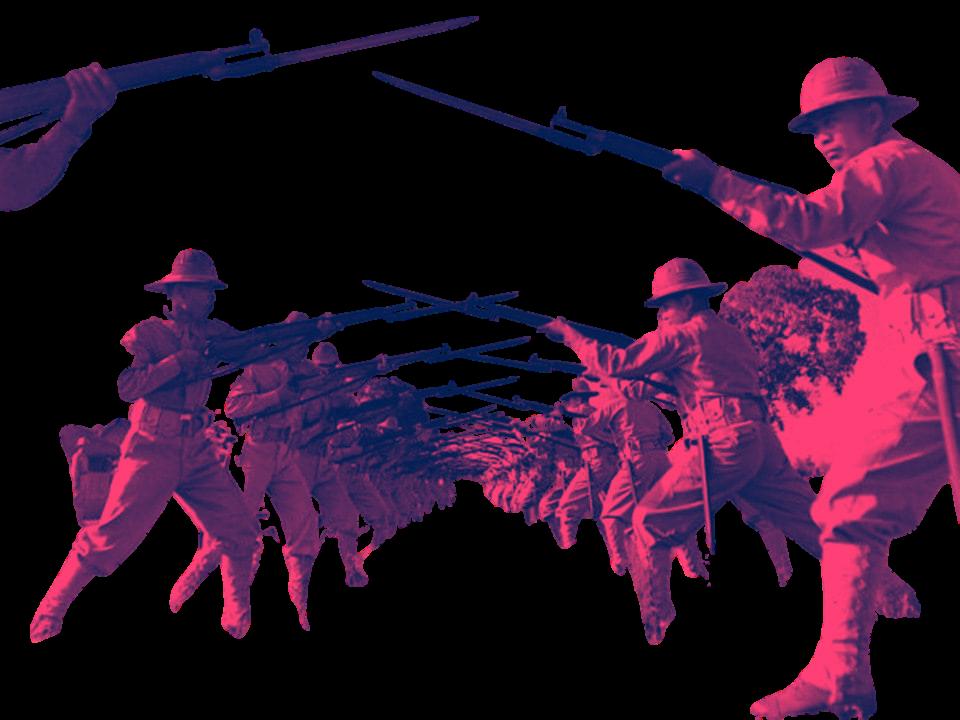
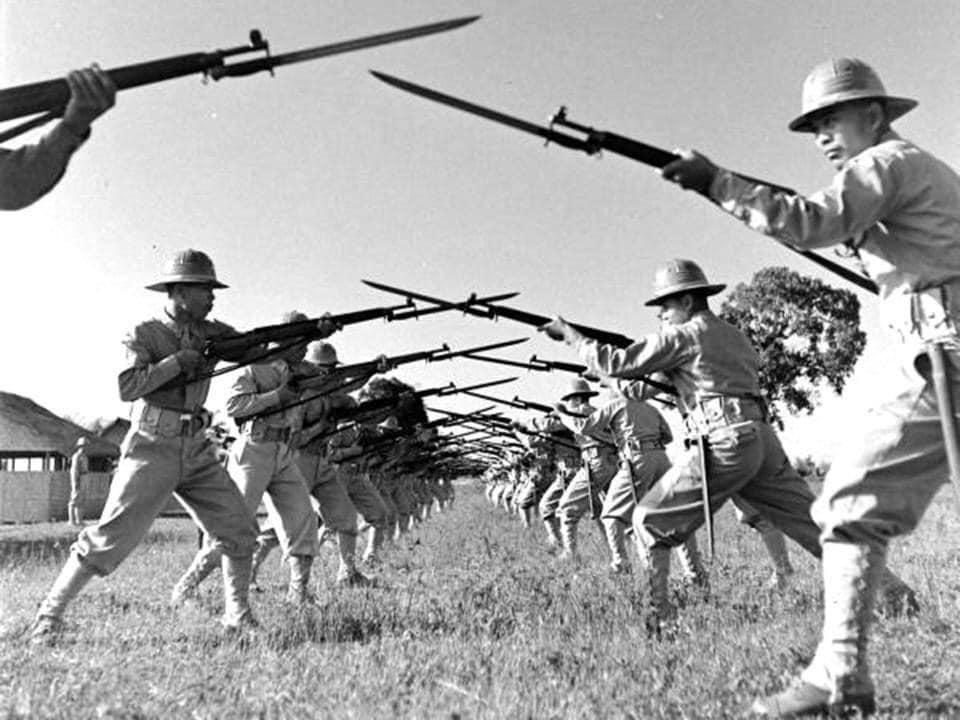
Fall of Bataan

The Philippine President, Manuel L Quezon, ruled as the country's head of state throughout the conflict During times of conflict, It was difficult for the country of the Philippines to fight without a president, he was exiled by the Japanese because they wanted to advance and conquer the country General Douglas MacArthur later receives a letter from the President transferring General Manuel L Quezon's position as Military Adviser of the Commonwealth of the Philippines to him because President Quezon was forced into exile as a result of Japan's occupation Beyond the letter are the words of President Manuel L Quezon, "I am leaving my own boys, under your care " (“Letter of President Quezon to Douglas MacArthur, February 20, 1942,” n d ) General MacArthur is in charge of the army of the Philippines, and he is responsible for keeping the brave soldiers safe. President Manuel L. Quezon is currently in the United States, where he is keeping the people's morale and determination as high as possible During this time (“Letter of President Quezon to General Douglas MacArthur, January 6, 1943,” n d ) The president wishes for the Japanese to leave the Philippines so that he can win the war for his people, and the President gratefully thanked General Douglas MacArthur because of his guidance and help in the war between the Filipino people and the Japanese occupiers
During that time they were experiencing a lack of resources at a point where their life was in danger because of the war Then suddenly, General Douglas MacArthur just left with words as a promise which he eventually fulfilled after 3 years. Within the three years that have happened, there were numerous events that have occurred that highlighted those years, such as the “Bataan Death March” in which many Philippine troops died The lack of resources during the past really affected the Filipinos in which lives were gone because of it and it is one of the most gruesome hardships that the country has ever faced If there was only a way for them to have acquired enough resources during that time, they could somehow fight back at the Japanese oppressors instantly Unfortunately, that was not the case, and the aftermath never ceased It has affected Filipinos up until the 21st century, as countless innocent people were killed brutally and experienced horrific abuses that they never should have experienced. Such events were forever written in history books and Filipinos are determined to never let that situation happen ever again


=

Fall of Bataan
The Filipinos struggled defending their homeland during the Japanese Empire's invasion. The country struggled even more because the leader was exiled and there was no longer any leadership in the country. It was difficult to persevere as it was felt that the country's leader was no longer with them, and as a result, they experienced the hardships that the Japanese empire inflicted on them. Filipinos always fought for justice and freedom from the Japanese, and they went through any length to ensure the country's well-being and that no lives were lost. As Filipinos who have a culture that endured endless battles, it is significant that as citizens to recognize that our history is one that is resilient Thus, calls us as citizens to be equally resilient in facing the socio-political adversities that may be encountered and as citizens, We are called to stand for our fellow Countrymen in fighting tyranny like what occurred in the battle of Bataan
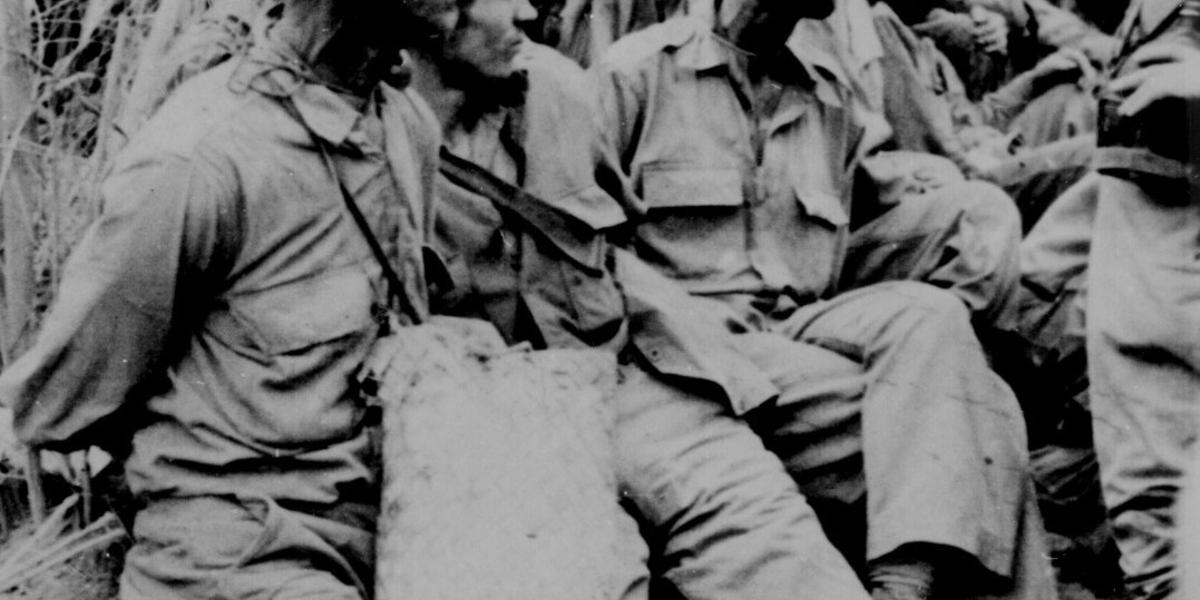
Fall of Coregidor


On December 24, 1941, President Manuel L Quezon transferred the seat of the Commonwealth Government to Corregidor following the invasion by the Japanese in the Philippines Corregidor's strategic location (between Cavite and Bataan and near Manila Bay), its network of underground tunnels, array of defensive armament and strong fortifications made the island a very vital control center for both American and Japanese forces (The Kahimyang Project., 2011). Officially named Fort Mills, Corregidor served as a key point of allied defensive plans in the Philippines in the years following the first World War. In May of 1942, Corregidor stood as the one of the final remaining allied strongholds in the Philippines following the Japanese victory at Bataan (Britannica, 2022).
From December 29, 1941 to the end of April 1942, the allied forces stationed in Corregidor were able to hold off the siege by Japanese troops, although as the siege was ongoing, Japanese forces were growing in confidence due to the weakening allied resistance During this period, many local Filipino troops were recruited to further fortify the defenses on the island Following Major General Edward King’s surrender of Bataan on April 9, Lieutenant General Masaharu Homma turned his attention to capturing Corregidor to eliminate any remaining enemy resistance around Manila Having secured Bataan, On April 28, Japanese troops began an aerial offensive against the island (Britannica, 2022) On May 6, 1942 U S Lieutenant General Jonathan Wainwright surrendered all remaining U S troops in the Philippines to the Japanese Wainwright was given little choice due to the poor condition of his troops, at that point they had suffered around 800 casualties and 1,000 wounded, with a further 11,000 troops captured While Wainwright wished to only surrender the troops on Corregidor, Japanese Lieutenant General Masaharu Homma insisted that he surrender all remaining U.S. and Filipino forces in the Philippines. The fall of Corregidor signified the fall of the Philippines and Asia to Japanese control. Although this was instrumental in the Japanese taking control of Asia, the multiple battles in Bataan and Corregidor severely delayed the projected timetable of the Japanese invasion (ASOMF, 2022).

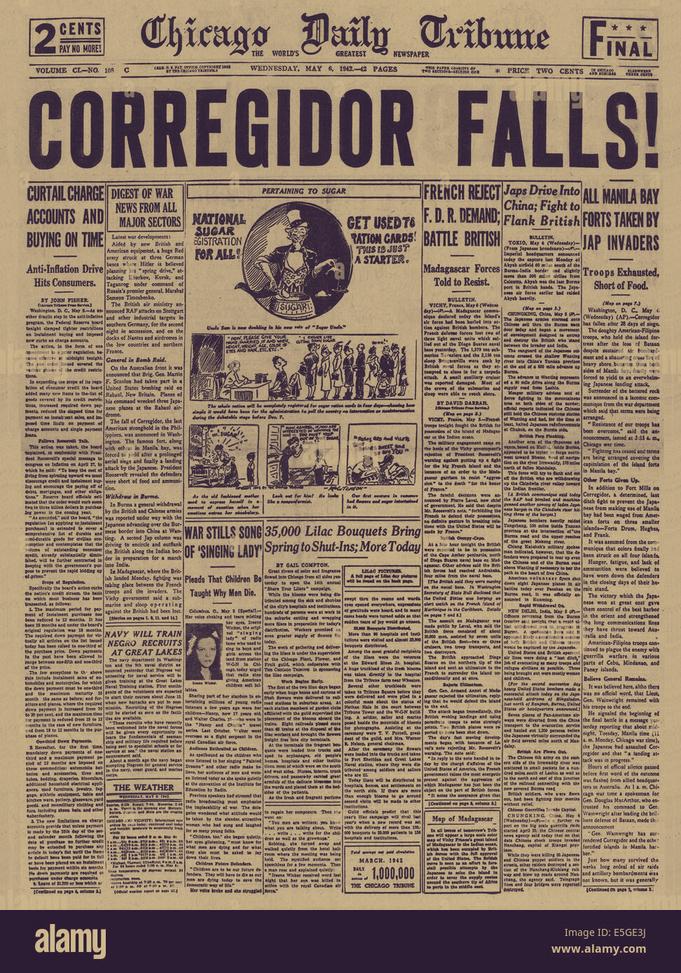
Fall of Coregidor

The allied liberation of the Philippine island of Luzon began on January 9, 1945. By February 7, 1945, allied forces were approaching Manila, with the goal of reopening Manila Bay. Corregidor remained to be an effective sentinel for Manila Bay. At this point, the island was the last remaining island occupied by Japanese forces. An estimated 600 Japanese troops remained on Corregidor. During the Japanese occupation, the Japanese troops had further expanded the network of underground tunnels and bunkers within Corregidor. General Douglas MacArthur had devised a strategy to make a simultaneous amphibious and airborne assault one of the most difficult military maneuvers to retake the island. While this strategy had previously seen success in previous landings in Luzon, this would prove to be more difficult in Corregidor. Due to the small size of the island, it would be more difficult for airborne paratroopers to successfully land on the island (Hickman, 2018)
On January 23, 1945 the Allied forces began bombing the island in order to weaken the remaining Japanese defense The US forces further bombarded the island on February 13 using artillery from warships near the coast of Corregidor 3 days later on the morning of February 16, allied forces engaged in bombing runs over the island which were shortly followed by the landing of paratroopers on the island The battle of Banzai Point proved to be the bloodiest within the retaking of Corregidor, with this being the first significant attack done by the Japanese forces The fighting carried on for 8 days, until February 21, 1945, when multiple Japanese troops were gunned down while attempting to attack allied positions. A last Japanese attack then took place 2 days later but was easily erased by the allied forces (Hickman, 2018). A large number of Japanese troops had drowned while swimming away the the island of Corregidor, while many committed suicide rather than face capture. On March 2, after congratulating the troops on their victory, General Douglas MacArthur said, “I see that the flagpole still stands…. Hoist the colors to its peak and let no enemy ever haul them down” (Owsianka, 2020). The retaking of Corregidor proved to be instrumental in reopening Manila Bay back to American troops. This was a strategic advantage as the port could be used to push back enemy forces. The retaking of Corregidor also proved to be a moral and symbolic victory, as it was one of the places that had suffered the most Allied surrenders in 1942.
The fall and retaking of Corregidor island is a very important aspect of World War 2 in the Philippines Corregidor served as one of the final defenses of the allied forces in the Philippines in 1942, and also as one of the last remaining islands under Japanese control in 1945 The parallels of victory and loss proved to be inspirational for the remnants of conflict remaining in the Philippines The victory and reclaiming of Corregidor provided a point of reference for overcoming the Japanese rule in the Philippines, after being defeated in the same island only three years earlier This victory also paved the way for American colonization of the Philippines, which still plays an important role in the lives of many Filipinos today Many Filipinos are fluent in English due to the colonization of America. Colonization also improved the level of education in the Philippines, as the previously unorganized structure of Philippine education was changed to become one similar to that employed in American schooling. However, this influx of American culture also brought a sense of social discrimination throughout the Filipino masses. Through colonialism, Americans established a racial hierarchy wherein American culture would dominate over Filipino culture (Sabado-Liwag et al., 2019)
BattleofLeyteand LiberationofthePhilippines

In the height of World War II, the state of Philippines became a witness to constitutional change, invasions, infrastructure damage, and economic regression though it is not limited to the arising tensions that have been caused by the nations involved (The National WWII Museum, New Orleans, 2021) The Philippines figured prominently in one of the greatest naval warfare in history, which took place during World War II in the bodies of water of Leyte, Philippines, from October 23 to October 26, 1944, between the armies of the United States and the Imperial Japanese Navy. The war on the sea began as a response to the Allied Invasion to reclaim the Philippine Islands which resulted in the empire of Japan sending a Navy to the islands though, the war greatly progressed and heightened tensions for the American troops to move more aggressively in terms of invading the Philippines (Britannica, 2022). The operations of the invasion had three objectives in their strategic yet aggressive plan of attack which was created by the chief of Naval Operations (Masuda, 2012). The operations centered on severing Japan's supply lines and relations with the Malay Archipelago, including the Philippines; in the interpretation of the American Navy team, it could be viewed as an economic attack because it would greatly aggravate shipping necessary materials such as scrap, steel, food, and, more importantly, natural resources such as oil(Ellingson, 2008). As a result, the American naval team intended to undermine Japan's supply, and economic growth, and the intended objective created by America emphasized on producing difficulties such as massive scarcity for the state of Japan Secondly, The formulated operations also intended to perform the neutralization of formerly known Formosa, now known as Taiwan and the east china coast (Masuda, 2012) The planned neutralization by the American Troops is centered by the fact that American higher powers sought interest in the nation which was treacherous for Japan as the empire of Japan had direct relations with formerly known Formosa losing more alliances in the war and providing way for American forces to reclaim and maintain stronger control of the sea routes which also, in turn, severs Japan's supplier of garrisons and military supplies as well (National Museum of the U.S. Navy, n.d.).Last but not least, it is acknowledged that America's strategy in the Battle of Leyte was to establish bases for an assault on the Japanese territory and islands. As a result, as American forces march into Japan, spreading more terror, increasing assaults, and losing influence over the geographical territory, the nation of Japan becomes increasingly weakly defended.

BattleofLeyteand LiberationofthePhilippines
As shots were fired from airplanes and military-grade weaponry from both ends of the sky and the oceans. History saw massive smoke that obscured the blueness of the sky, as well as slaughter and loss of many individuals. As the first battle occurred, Japanese aircrafts organized kamikaze attacks towards American navy ships which greatly damaged their supplies and killed individuals in the seas of Leyte, Philippines though America contested further, possessing a more offensive position in the war with their great deal of aggressive weaponry (Mahnken, n.d.) . As the U.S. Navy carriers constantly attacked Japan with aircrafts launching bullets from the air, Japan was running low on weaponry and more significantly, crippled the Japanese Fleet In reflection to the gulf war, there were tantamounts of outcomes for the states of the Philippines, Japan, and the United States of America as there were grave effects in terms of politics, economics, and infrastructure In the view of politics, the loss of Japan in the war resulted in enabling the United States to invade and occupy the Philippines which in known history of the Philippines resulted in improving the educational system of the state but also contributed further to the psycho-cultural marginality and loss of one culture (CSUN University, 2022) Though, it is also important to recognize the economic effects of the overall altercations in the battle of leyte and world war II in this aspect The Philippines greatly was affected in terms of property destruction as there were various attacks which hit areas of Leyte (Straczek, n.d.). Thus, requiring rehabilitation and rebuilding of the land which required natural resources and monetary resources which the Philippines lacked and thus, they became more dependent towards colonizing powers like America to aid the state in fixing the land and infrastructure they damaged significantly.
As students looking and studying through the broader picture, the World War II battle of Leyte Gulf is considered to be still impacting the nation and teaching society a few lessons in the contemporary age. First and foremost, as previously stated, the overall outcome of the war, being that America won, enabled colonization in the Philippines with American rule, which, in the twenty-first century, enabled the creation of a colonial mentality and a significant shift in the culture becoming more westernized, thereby weakening the original Filipino identity among the citizens of the nation These consequences may still be felt now, since Filipinos have a xenophobia against their own culture Overall, It is crucial to acknowledge this period of history as World War II events: the battle of Leyte still has political ramifications, as we can see the westernization of the Filipino point of view, as well as the ramifications of economic problems and damage to infrastructure and resources As the people who have come after the aforementioned events of world war II; it is deemed our responsibility to our history to shed light on the brutalities that occurred in the past.

BattleofLeyteand LiberationofthePhilippines
The incumbent general, General MacArthur addressed the Filipinos and stated that “the entire Philippine Islands are now liberated and the Philippine campaigns can be regarded as virtually closed.” The announcement said on the date of July 5, 1945, provided a day and a moment of tranquility approaching when the battle in the Leyte region moved towards the end of the Second World War ending the conflict between the forces of Japan and the American Navy, and signaling the near beginning of the rehabilitation and reconquest of the Philippines as a state (GOVPH, 1945). The scene of the period of liberation would be imagined to depict military personnel traversing the streets along the destroyed infrastructure as the Philippines was rising above the challenges and battles as a unified unit faced. The liberation of the Philippines from Japanese occupation and the establishment of a new colonial relationship with American rule is an event that lives on in modern-day Philippines as the Philippines continues to witness the effects of world war II and the liberation from it In a political sense, the liberation affected the Philippines in a way that the Philippines is enabled to celebrate their sovereignty as a country Thus, empowering the state to be recognized as independent and to create independent decisions in terms of their economy, education, governance, and more
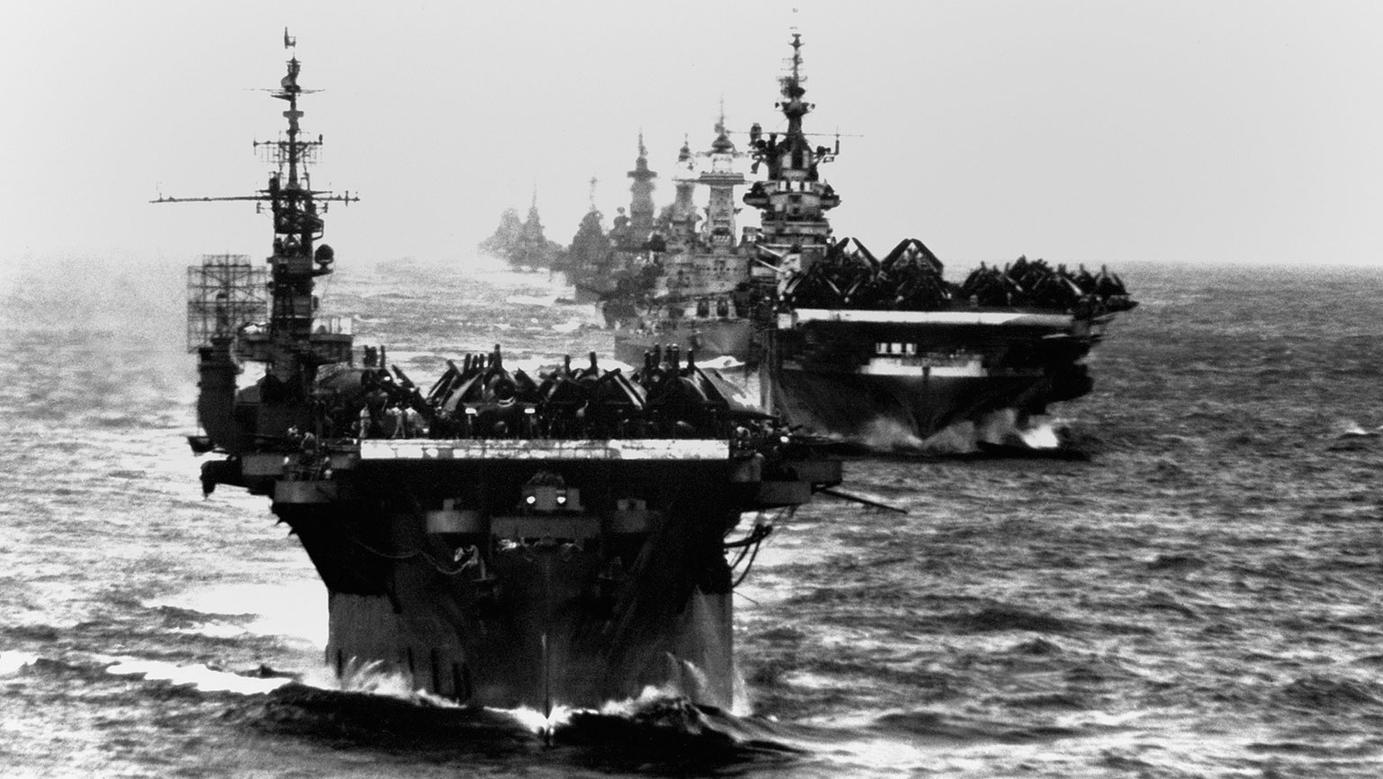
It is imperative that we keep in mind the victories, horrors, and errors that occurred during World War II as we evolve as a civilization The way we live, govern, and communicate now is a direct result of the many historical wars that have taken place in the Philippines and In order to empower ourselves and work for a more diplomatic society in terms of economics, government, and culture, we feel it is important for individuals to educate themselves about historical events and the effects that the past wars possess. Moreover, World War II taught the masses that it is significant to utilize democracy and lobby for resolutions that avoid war but rather promote peace and bipartisan solutions.

References
A&E TELEVISION NETWORKS (2009 NOVEMBER 5) ALL AMERICAN FORCES IN THE PHILIPPINES
SURRENDER UNCONDITIONALLY HISTORY COM
HTTPS://WWW HISTORY COM/THIS-DAY-IN-HISTORY/ALL-AMERICAN-FORCES-IN-THE-PHILIPPINES-SURRENDER-UNCONDITIONALLY CSUN UNIVERSITY (2022, SEPTEMBER 16) AMERICAN IMPERIALISM IN THE PHILIPPINES CSUN UNIVERSITY LIBRARY HTTPS://LIBRARY CSUN EDU/SCA/PEEK-INTHE-STACKS/US-IMPERIALISM-PHILIPPINES
DONORS@ASOMF ORG (2022 JANUARY 18) WHAT HAPPENED DURING THE BATTLE OF CORREGIDOR? ASOMF HTTPS://WWW ASOMF ORG/WHAT-HAPPENEDDURING-THE-BATTLE-OF-CORREGIDOR/
ELLINGSON (2008 JUNE 8) THE BASTARDS OF BATAAN: GENERAL DOUGLAS MAC AURTHOR S ROLE IN THE FALL OF THE PHILIPPINES DURING WORLD WAR II
HTTPS://EFAIDNBMNNNIBPCAJPCGLCLEFINDMKAJ/HTTPS://WOU EDU/HISTORY/FILES/2015/08/LAHIA-ELLINGSON PDF
THE EDITORS OF ENCYCLOPAEDIA BRITANNICA (2022 OCTOBER 16) BATTLE OF LEYTE GULF | FACTS CASUALTIES & SIGNIFICANCE ENCYCLOPEDIA
BRITANNICA HTTPS://WWW BRITANNICA COM/EVENT/BATTLE-OF-LEYTE-GULF
IMPERIAL WAR MUSEUMS (N D ) WHAT HAPPENED AT PEARL HARBOR? HTTPS://WWW IWM ORG UK/HISTORY/WHAT-HAPPENED-AT-PEARL-HARBOR
GERARDO, S P (2019, APRIL 10) ‘ECONOMIC REHABILITATION AFTER WORLD WAR II PHILIPPINE REPUBLIC IN INFANCY ’ PHILSTAR GLOBAL
HTTPS://WWW PHILSTAR COM/BUSINESS/2019/04/10/1908626/ECONOMIC-REHABILITATION-AFTER-WORLD-WAR-II-PHILIPPINE-REPUBLIC-INFANCY
HISTORY OF THE PHILIPPINE AIR FORCE | GOVPH (N D ) OFFICIAL GAZETTE OF THE REPUBLIC OF THE PHILIPPINES
HTTPS://WWW OFFICIALGAZETTE GOV PH/FEATURED/HISTORY-PHILIPPINE-AIR-FORCE/
HISTORY COM EDITORS (2020, FEBRUARY 24) U S TROOPS RECAPTURE PHILIPPINE ISLAND OF CORREGIDOR HISTORY
HTTPS://WWW HISTORY COM/THIS-DAY-IN-HISTORY/CORREGIDORS-LAST-GASP
IMPERIAL WAR MUSEUMS (N D ) WHAT HAPPENED AT PEARL HARBOR? HTTPS://WWW IWM ORG UK/HISTORY/WHAT-HAPPENED-AT-PEARL-HARBOR
KESTERNICH I SIFLINGER B SMITH J P & WINTER J K (2014) THE EFFECTS OF WORLD WAR II ON ECONOMIC AND HEALTH OUTCOMES ACROSS EUROPE THE REVIEW OF ECONOMICS AND STATISTICS 96(1) 103–118 HTTPS://DOI ORG/10 1162/REST A 00353
MILESTONES: 1914Â 1920 - OFFICE OF THE HISTORIAN (N D ) HTTPS://HISTORY STATE GOV/MILESTONES/1914-1920/PARIS-PEACE
MAHNKEN T (N D ) ASYMMETRIC WARFARE AT SEA: THE NAVAL BATTLES OFF GUADALCANAL 1942–1943 JSTOR 64(1) 95–121
HTTPS://WWW JSTOR ORG/STABLE/26397177

MASUDA H (2012) MACARTHUR IN ASIA: THE GENERAL AND HIS STAFF IN THE PHILIPPINES JAPAN AND KOREA JSTOR
HTTPS://WWW JSTOR ORG/STABLE/10 7591/J CTTN34T1
MILESTONES: 1914Â 1920 - OFFICE OF THE HISTORIAN (N D ) HTTPS://HISTORY STATE GOV/MILESTONES/1914-1920/PARIS-PEACE
NATIONAL MUSEUM OF THE U S NAVY (N D ) BATTLE OF THE PHILIPPINES NAVAL HISTORY AND HERITAGE COMMAND
HTTPS://WWW HISTORY NAVY MIL/CONTENT/HISTORY/MUSEUMS/NMUSN/EXPLORE/PHOTOGRAPHY/WWII/WWII-PACIFIC/US-ENTRY-INTO-WWII-JAPANESEOFFENSIVE/1941-DECEMBER-8-1942-MAY-6-PHILIPPINES HTML
LETTER OF PRESIDENT QUEZON TO DOUGLAS MACARTHUR FEBRUARY 20 1942 | GOVPH (1942B FEBRUARY 20) OFFICIAL GAZETTE OF THE REPUBLIC OF THE PHILIPPINES HTTPS://WWW OFFICIALGAZETTE GOV PH/1942/02/20/LETTER-OF-PRESIDENT-QUEZON-TO-DOUGLAS-MACARTHUR-FEBRUARY-20-1942/ OFFICIALGAZZETTE (N D ) WORLD WAR II IN THE PHILIPPINES OFFICIALGAZZETTE HTTPS://WWW OFFICIALGAZETTE GOV PH/ARAW-NG-KAGITINGAN2013/WORLD-WAR-II-IN-THE-PHILIPPINES/ PRESIDENT’S MONTH IN REVIEW: JULY 1945 | GOVPH (1945 JULY 1) OFFICIAL GAZETTE OF THE REPUBLIC OF THE PHILIPPINES HTTPS://WWW OFFICIALGAZETTE GOV PH/1945/07/01/PRESIDENTS-MONTH-IN-REVIEW-JULY-1945/
SABADO-LIWAG M D MANALO-PEDRO E TAGGUEG R BACONG A M ADIA A DEMANARIG D SUMIBCAY J R VALDERAMA-WALLACE C ORONCE C BONUS, R , & PONCE, N A (2019, FEBRUARY) ADDRESSING THE INTERLOCKING IMPACT OF COLONIALISM AND RACISM ON FILIPINX/A/O AMERICAN HEALTH INEQUITIES HTTPS://WWW HEALTHAFFAIRS ORG/DOI/10 1377/HLTHAFF 2021 01418
STRACZEK, J (N D ) BATTLE OF LEYTE GULF (1944) | ROYAL AUSTRALIAN NAVY HTTPS://WWW NAVY GOV AU/HISTORY/FEATURE-HISTORIES/BATTLE-LEYTEGULF-1944
TODAY IN PHILIPPINE HISTORY DECEMBER 24 1941 PRESIDENT QUEZON TRANSFERRED THE SEAT OF THE COMMONWEALTH GOVERNMENT TO CORREGIDOR ISLAND (2011B DECEMBER 24) THE KAHIMYANG PROJECT HTTPS://KAHIMYANG COM/KAUSWAGAN/ARTICLES/842/TODAY-IN-PHILIPPINE-HISTORYDECEMBER-24-1941-PRESIDENT-QUEZON-TRANSFERRED-THE-SEAT-OF-THE-COMMONWEALTH-GOVERNMENT-TO-CORREGIDOR-ISLAND
THE TREATY OF VERSAILLES 1919 (BY CHÂTEAU DE VERSAILLES) (2021 JUNE 22) CHÂTEAU DE VERSAILLES
HTTPS://EN CHATEAUVERSAILLES FR/DISCOVER/HISTORY/KEY-DATES/TREATY-VERSAILLES-1919
U S LIBRARY OF CONGRESS (N D ) WORLD WAR II COUNTRYSTUDIES HTTP://COUNTRYSTUDIES US/PHILIPPINES/21 HTML
WWI CHANGED US: HOW THE PHILIPPINES SHAPED AMERICA’S FIRST WORLD WAR – CHRIS CAPOZZOLA (2020) NATIONAL WWI MUSEUM AND MEMORIAL
HTTPS://WWW THEWORLDWAR ORG/LEARN/ABOUT-WWI/WWI-CHANGED-US-HOW-PHILIPPINES-SHAPED-AMERICAS-FIRST-WORLD-WAR-CHRIS-CAPOZZOLA
WORLD WAR II: BATTLE OF CORREGIDOR (2018, DECEMBER 3)
THOUGHTCO HTTPS://WWW THOUGHTCO COM/WORLD-WAR-II-BATTLE-OF-CORREGIDOR-2361467
YBIERNAS, V (2007) PHILIPPINE FINANCIAL STANDING IN 1921 THE FIRST WORLD WAR BOOM AND BUST JSTOR HTTPS://WWW JSTOR ORG/STABLE/42633919
YU-JOSE L (1994 MARCH) WORLD WAR II AND THE JAPANESE IN THE PREWAR PHILIPPINES JSTOR HTTPS://WWW JSTOR ORG/STABLE/20071758
